Edible Parts: The stem is an excellent source of sugar and is very nutritious. Peel the outer portion off with your teeth and eat the sugarcane raw. You can also squeeze juice out of the sugarcane.
Sugar palm
Arenga pinnata
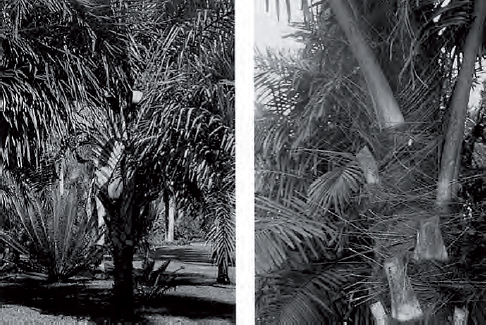
Description: This tree grows about 15 meters high and has huge leaves up to 6 meters long. Needlelike structures stick out of the bases of the leaves. Flowers grow below the leaves and form large conspicuous dusters from which the fruits grow.
Habitat and Distribution: This palm is native to the East Indies but has been planted in many parts off the tropics. It can be found at the margins of forests.
Edible Parts: The chief use of this palm is for sugar. However, its seeds and the tip of its stems are a survival food. Bruise a young flower stalk with a stone or similar object and collect the juice as it comes out. It is an excellent source of sugar. Boil the seeds. Use the tip of the stems as a vegetable.
The flesh covering the seeds may cause dermatitis.
Other Uses: The shaggy material at the base of the leaves makes an excellent rope as it is strong and resists decay.
Sweetsop
Annona squamosa
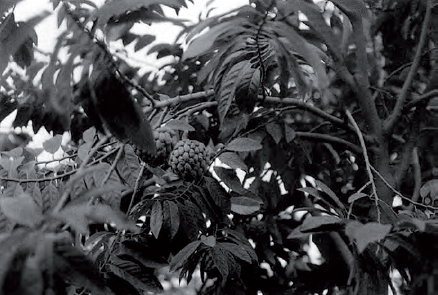
Description: This tree is small, seldom more than 6 meters tall, and multi-branched. It has alternate, simple, elongate, dark green leaves. Its fruit is green when ripe, round in shape, and covered with protruding bumps on its surface. The fruit’s flesh is white and creamy.
Habitat and Distribution: Look for sweetsop at margins of fields, near villages, and around homesites in tropical regions.
Edible Parts: The fruit flesh is edible raw.
Other Uses: You can use the finely ground seeds as an insecticide.
The ground seeds are extremely dangerous to the eyes.
Tamarind
Tamarindus indica
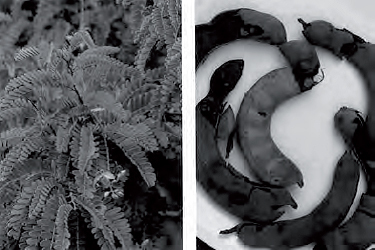
Description: The tamarind is a large, densely branched tree, up to 25 meters tall. Its has pinnate leaves (divided like a feather) with 10 to 15 pairs of leaflets.
Habitat and Distribution: The tamarind grows in the drier parts of Africa, Asia, and the Philippines. Although it is thought to be a native of Africa, it has been cultivated in India for so long that it looks like a native tree. It it also found in the American tropics, the West Indies, Central America, and tropical South America.
Edible Parts: The pulp surrounding the seeds is rich in vitamin C and is an important survival food. You can make a pleasantly acid drink by mixing the pulp with water and sugar or honey and letting the mixture mature for several days. Suck the pulp to relieve thirst. Cook the young, unripe fruits or seedpods with meat. Use the young leaves in soup. You must cook the seeds. Roast them above a fire or in ashes. Another way is to remove the seed coat and soak the seeds in salted water and grated coconut for 24 hours, then cook them. You can peel the tamarind bark and chew it.
Taro, cocoyam, elephant ears, eddo, dasheen
Colocasia and Alocasia species
Description: All plants in these groups have large leaves, sometimes up to 1.8 meters tall, that grow from a very short stem. The rootstock is thick and fleshy and filled with starch.
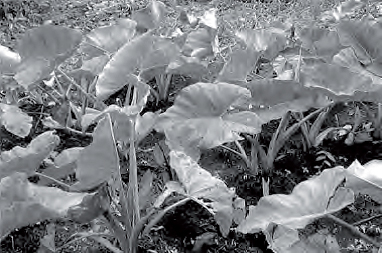
Habitat and Distribution: These plants grow in the humid tropics. Look for them in fields and near homesites and villages.
Edible Parts: All parts of the plant are edible when boiled or roasted. When boiling, change the water once to get rid of any poison.
If eaten raw, these plants will cause a serious inflammation of the mouth and throat.
Thistle
Cirsium species
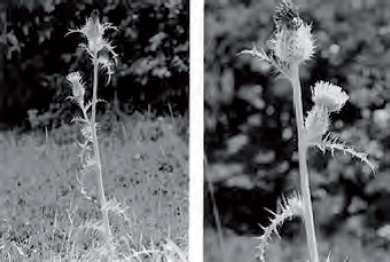
Description: This plant may grow as high as 1.5 meters. Its leaves are long-pointed, deeply lobed, and prickly.
Habitat and Distribution: Thistles grow worldwide in dry woods and fields.
Edible Parts: Peel the stalks, cut them into short sections, and boil them before eating. The roots are edible raw or cooked.
Some thistle species are poisonous.
Other Uses: Twist the tough fibers of the stems to make a strong twine.
Ti
Cordyline terminalis
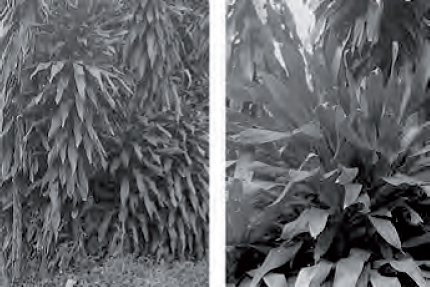
Description: The ti has unbranched stems with straplike leaves often clustered at the tip of the stem. The leaves vary in color and may be green or reddish. The flowers grow at the plant’s top in large, plumelike clusters. The ti may grow up to 4.5 meters tall.
Habitat and Distribution: Look for this plant at the margins of forests or near home-sites in tropical areas. It is native to the Far East but is now widely planted in tropical areas worldwide.
Edible Parts: The roots and very tender young leaves are good survival food. Boil or bake the short, stout roots found at the base of the plant. They are a valuable source of starch. Boil the very young leaves to eat. You can use the leaves to wrap other food to cook over coals or to steam.
Other Uses: Use the leaves to cover shelters or to make a rain cloak. Cut the leaves into liners for shoes; this works especially well if you have a blister. Fashion temporary sandals from the ti leaves. The terminal leaf, if not completely unfurled, can be used as a sterile bandage. Cut the leaves into strips, then braid the strips into rope.
Tree fern
Various genera
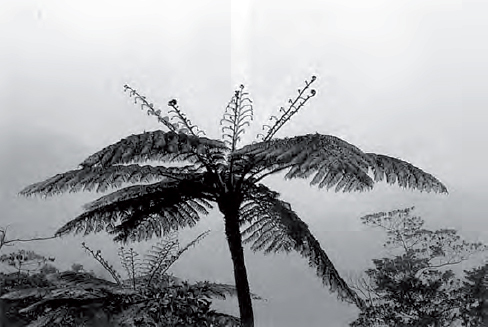
Description: Tree ferns are tall trees with long, slender trunks that often have a very rough, barklike covering. Large, lacy leaves uncoil from the top of the trunk.
Habitat and Distribution: Tree ferns are found in wet, tropical forests.
Edible Parts: The young leaves and the soft inner portion of the trunk are edible. Boil the young leaves and eat as greens. Eat the inner portion of the trunk raw or bake it.
Tropical almond
Terminalia catappa
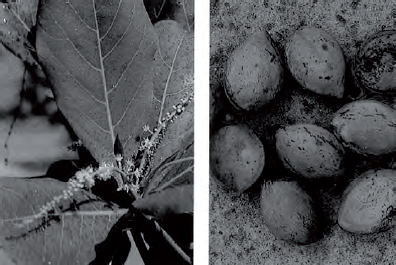
Description: This tree grows up to 9 meters tall. Its leaves are evergreen, leathery, 45 centimeters long, 15 centimeters wide, and very shiny. It has small, yellowish-green flowers. Its fruit is flat, 10 centimeters long, and not quite as wide. The fruit is green when ripe.
Habitat and Distribution: This tree is usually found growing near the ocean. It is a common and often abundant tree in the Caribbean and Central and South America. It is also found in the tropical rain forests of southeastern Asia, northern Australia, and Polynesia.
Edible Parts: The seed is a good source of food. Remove the fleshy, green covering and eat the seed raw or cooked.
Walnut